Can Singapore’s Housing Market Handle A Rapidly Ageing Population?
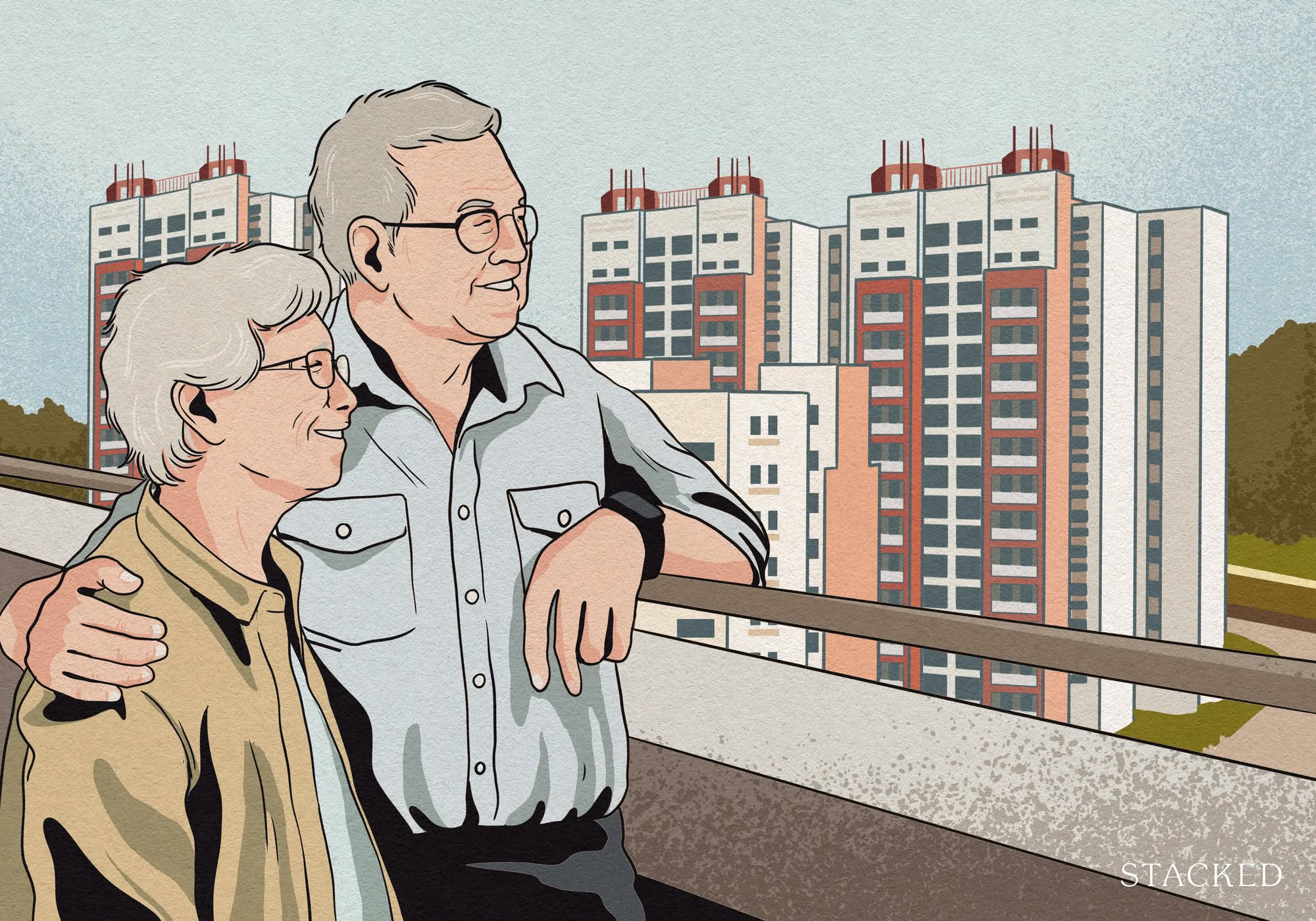
Get The Property Insights Serious Buyers Read First: Join 50,000+ readers who rely on our weekly breakdowns of Singapore’s property market.
Cheryl has been writing about international property investments for the past two years since she has graduated from NUS with a bachelors in Real Estate. As an avid investor herself, she mainly invests in cryptocurrency and stocks, with goals to include real estate, virtual and physical, into her portfolio in the future. Her aim as a writer at Stacked is to guide readers when it comes to real estate investments through her insights.
Ever walked into a brand new condo showflat and wondered why every development seems to have the exact same facilities? Infinity pool, check. Sky gardens, check. Token “senior fitness corner” with three outdated machines, check.
But what if I told you that by 2030, one in four Singaporeans will be over 65. And at the rate at which things are going, our property market might be completely unprepared for it?
Even Elon Musk (yes, that Elon) took a swipe at our situation, basically saying we’re “hurtling toward extinction” with our ultra-low fertility rates. Brutal? Sure. But he’s not exactly wrong.
Our Current Senior Housing Model Is Running on Empty
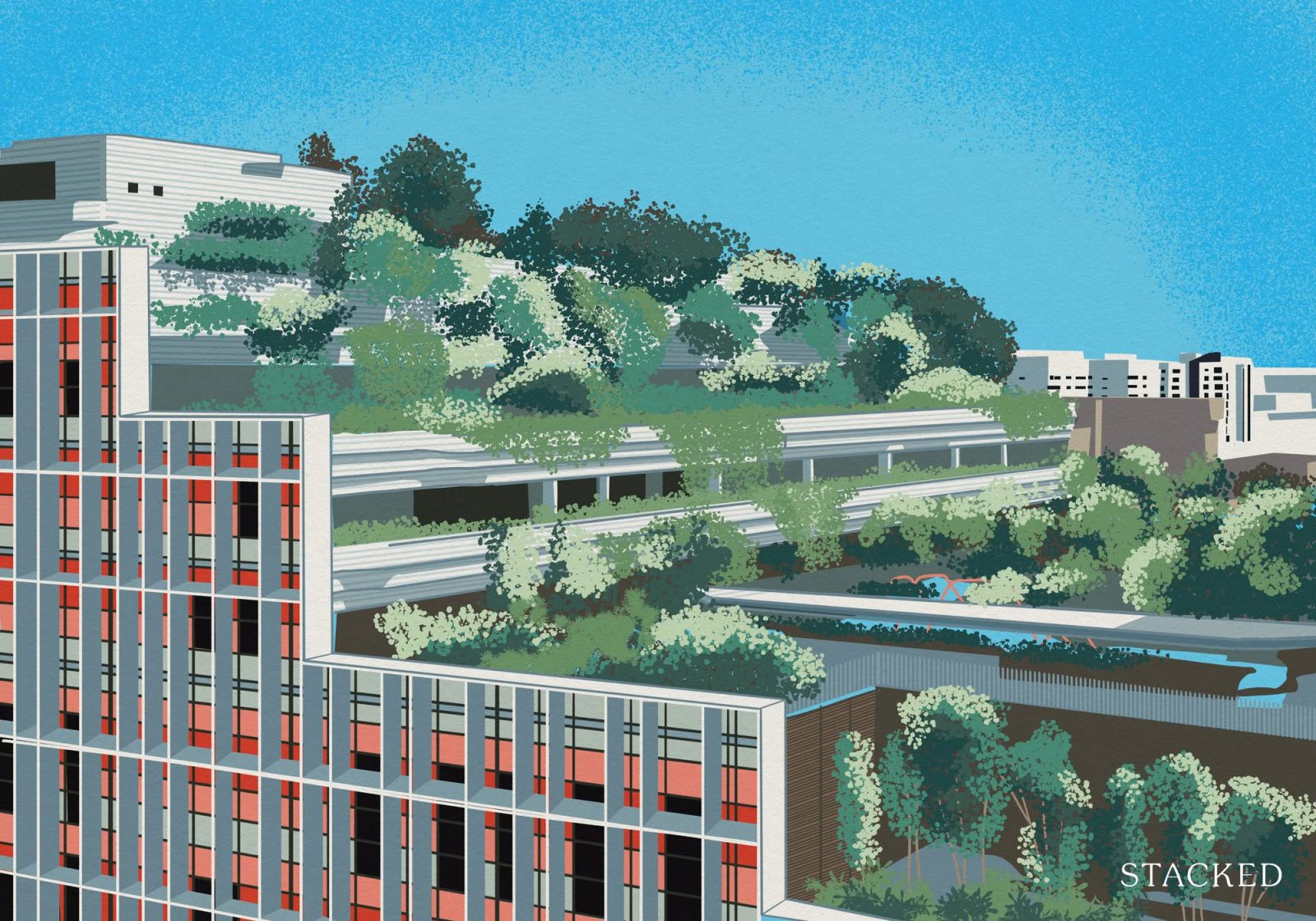
Think about the 99-year lease model for a second.
For seniors, it’s practically a cruel joke – they’re essentially paying for decades they’ll never live to see. How many would prefer a 30-year lease at half the price and pocket the difference for actually enjoying their retirement?
It’s not that Singapore hasn’t tried, but frankly, our senior housing solutions feel more like pilot projects than actual answers to a massive demographic shift.
Kampung Admiralty, opened in 2018, stands as Singapore’s integrated senior living flagship. On paper, it checks all the boxes: hawker centre, medical facilities, and 100 senior-friendly flats in a vertical kampung concept. Its successor, Heart of Yew Tee, is set to open in 2026 with 68 units.
But combined, that’s only 168 units total.
HDB has also rolled out the 2-room Flexi Scheme, offering smaller units with lease options ranging from 15 to 45 years for elderly buyers. It’s a well-intentioned initiative, but its focus on smaller units often doesn’t match what many seniors actually want, which is space for family visits, familiar furniture, and decades of accumulated belongings.
In 2021, HDB launched Community Care Apartments in Bukit Batok—Singapore’s first assisted living public housing with integrated care services, offering 169 units. Again, a good concept, but the scale is simply too small to move the needle significantly.
Then there’s The Hillford, launched in 2013 as Singapore’s first private retirement village. With a shorter 60-year lease and compact units (one-bedroom, two-bedroom, and dual-key layouts), it seemed like a refreshing pivot from the typical old folks’ home image. The focus was lifestyle: domestic care services, community activities, and spaces designed for interaction.
The irony? Many buyers weren’t even seniors but younger investors who saw a chance to get an affordable RCR address and didn’t mind the lease shortfall.
Other initiatives include the Lease Buyback Scheme (allowing seniors to sell part of their lease back to HDB), the Silver Housing Bonus (providing financial incentives for downsizing), and the EASE program (retrofitting homes with elder-friendly features). Each helpful in its own way, but together they still don’t address the fundamental need for purpose-built senior housing at scale.
The latest government attempts sound equally modest:
- “Shared Stay-In Senior Care Service” (foreign caregivers in shared apartments)
- Converting Henderson Primary School into an “intergenerational co-living space” with 107 rooms
- Developing dementia-friendly HDB estates with wayfinding features and community support
These aren’t comprehensive solutions—they’re experiments. And while experimentation has its place, our rapidly ageing population demands something more substantial, more visionary, and frankly, more ambitious.
From Watching My Own Family Members Age…
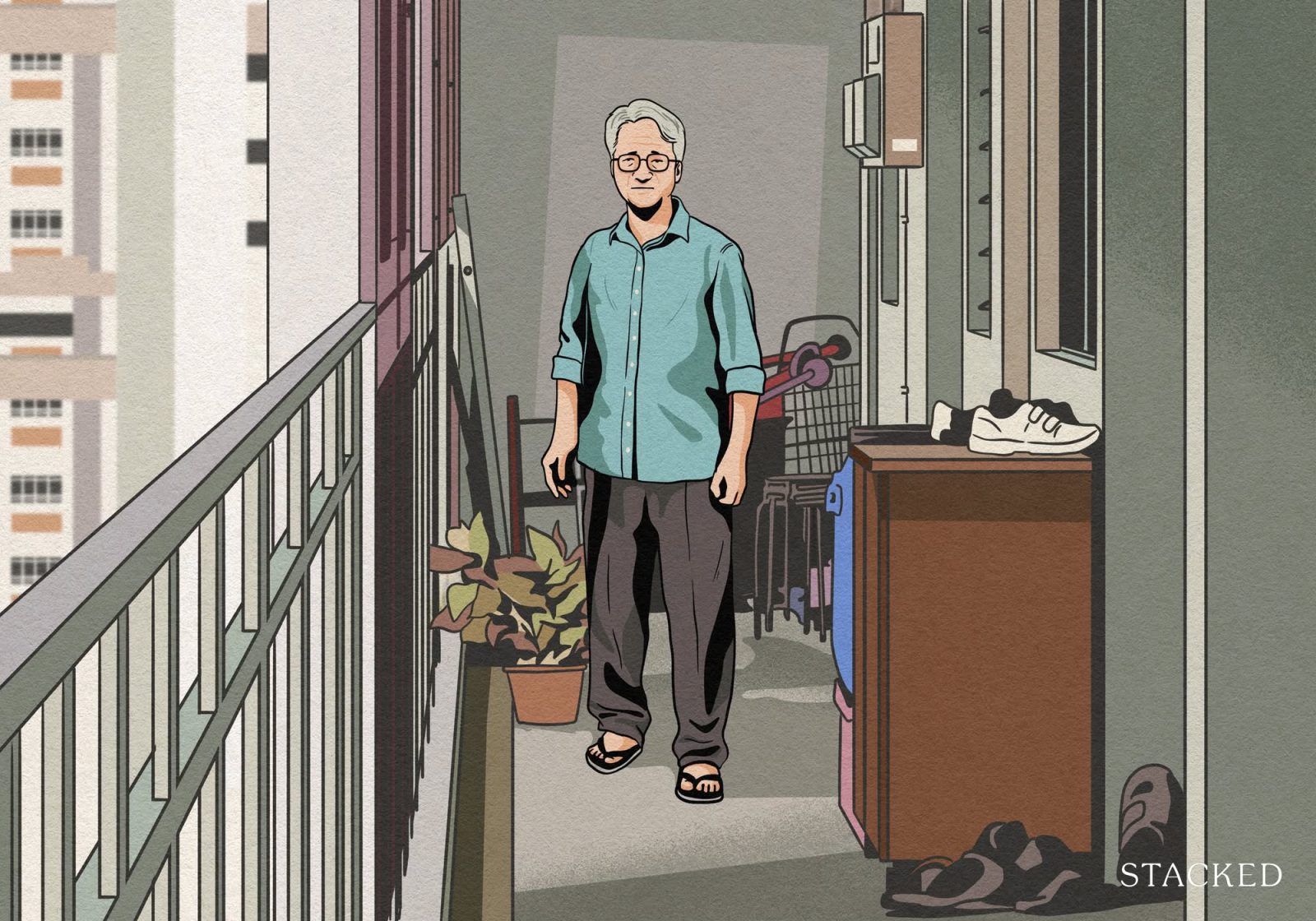
I’ve realised that senior housing isn’t just about where they live, but rather, it’s about how they live.
Loneliness, lack of purpose, tragic cases of elderly residents passing away unnoticed in their homes, these are sobering realities that affordability alone can’t solve.
Here’s the reality: 8 in 10 older adults want to age in their current homes. My parents, both in their early 60s, are prime examples. They love their routines and their community. Suggest downsizing and they’ll look at you like you’ve lost your mind.
Why would they move? To a smaller, more expensive unit? To a “retirement community” that feels more like an afterthought than a destination?
Meanwhile, China Is Showing Us What’s Possible
And I’m not just talking generalities here. WATG, a leading architecture firm, has been creating senior living spaces in China.
More from Stacked
Will One Pearl Bank, Kopar, Amber Park, Or The Avenir Be A Better Choice For A 3/4 Bedroom Unit For A Family?
Hi there,
Vicky from WATG shared details about one of its standout projects: CITIC Chongming Island Retirement Community.
It might not be the one-ticket solution to our problem, but let’s see what we can learn from them.
CITIC Chongming Island Retirement Community: A Glimpse Into What’s Possible
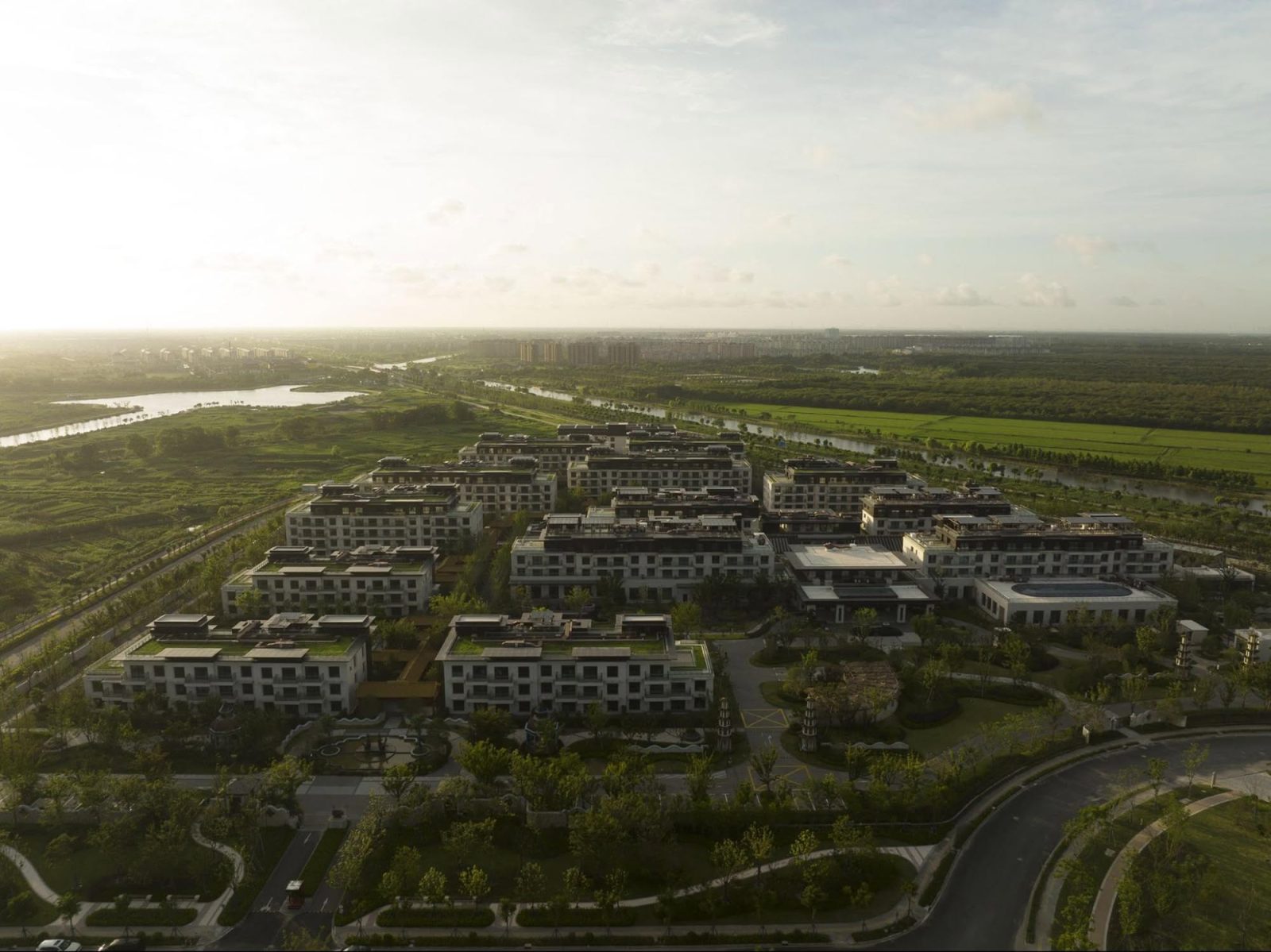
For context, Chongming Island is a massive 1,411 km² slice of Shanghai with around 637,921 residents. Sitting at the mouth of the Yangtze River, it’s the perfect backdrop for this resort-style retirement village.
What makes this project different is its approach as a “continuous care community.” This means seniors can stay in one place as their needs change, accessing everything from healthcare to social activities without ever feeling uprooted.
The project also integrates various amenities specifically designed for seniors, such as assisted living facilities, a care centre, and nursing support.
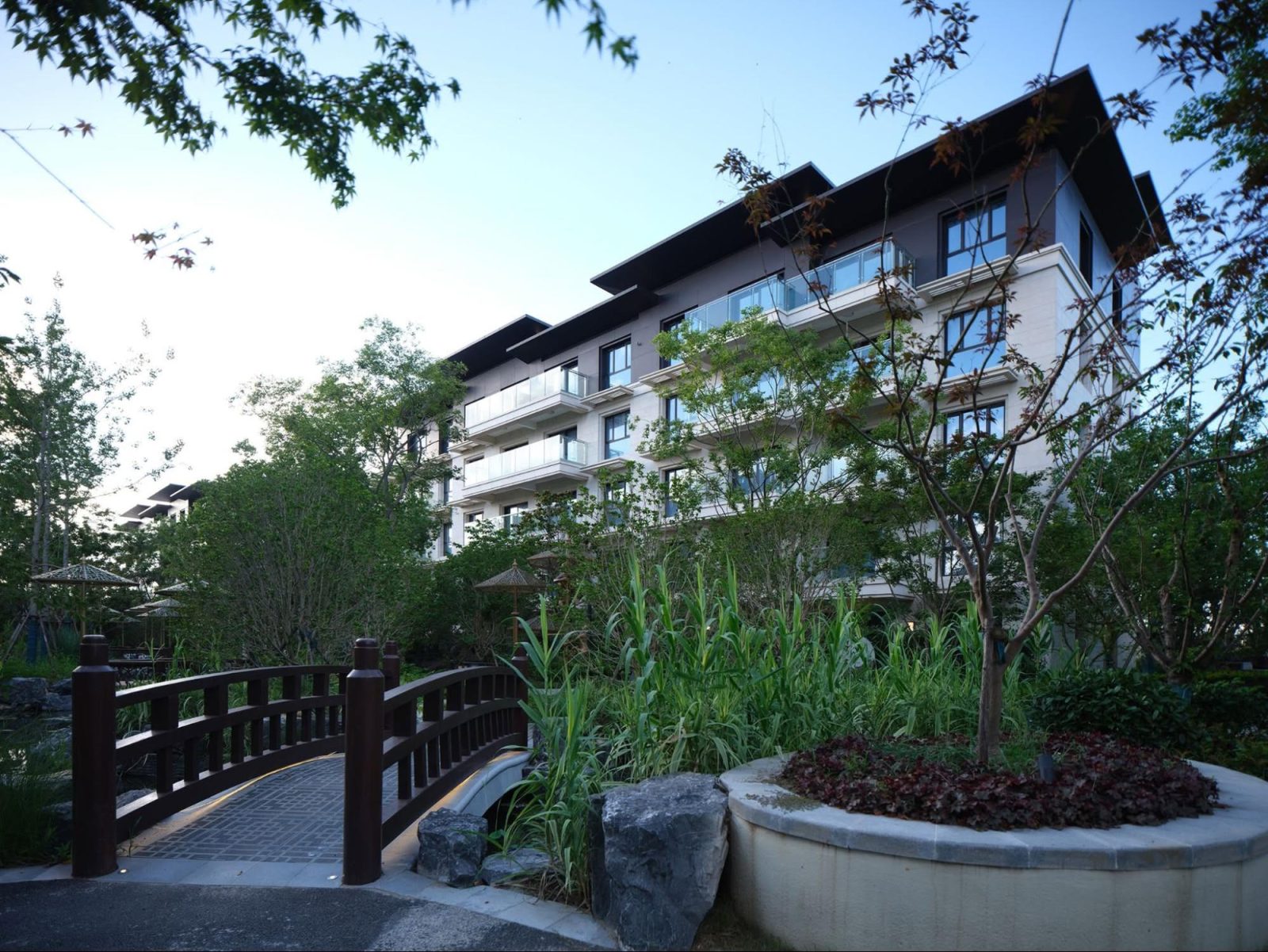
Accessible architecture – rampways, elevators, and barrier-free pathways – are designed to aid the mobility-challenged.
The architecture draws from Jiangnan influences, emphasising low-rise structures that blend into the natural landscape. “The design respects the local environment and culture, fostering a sense of connection for residents,” Vicki explained.
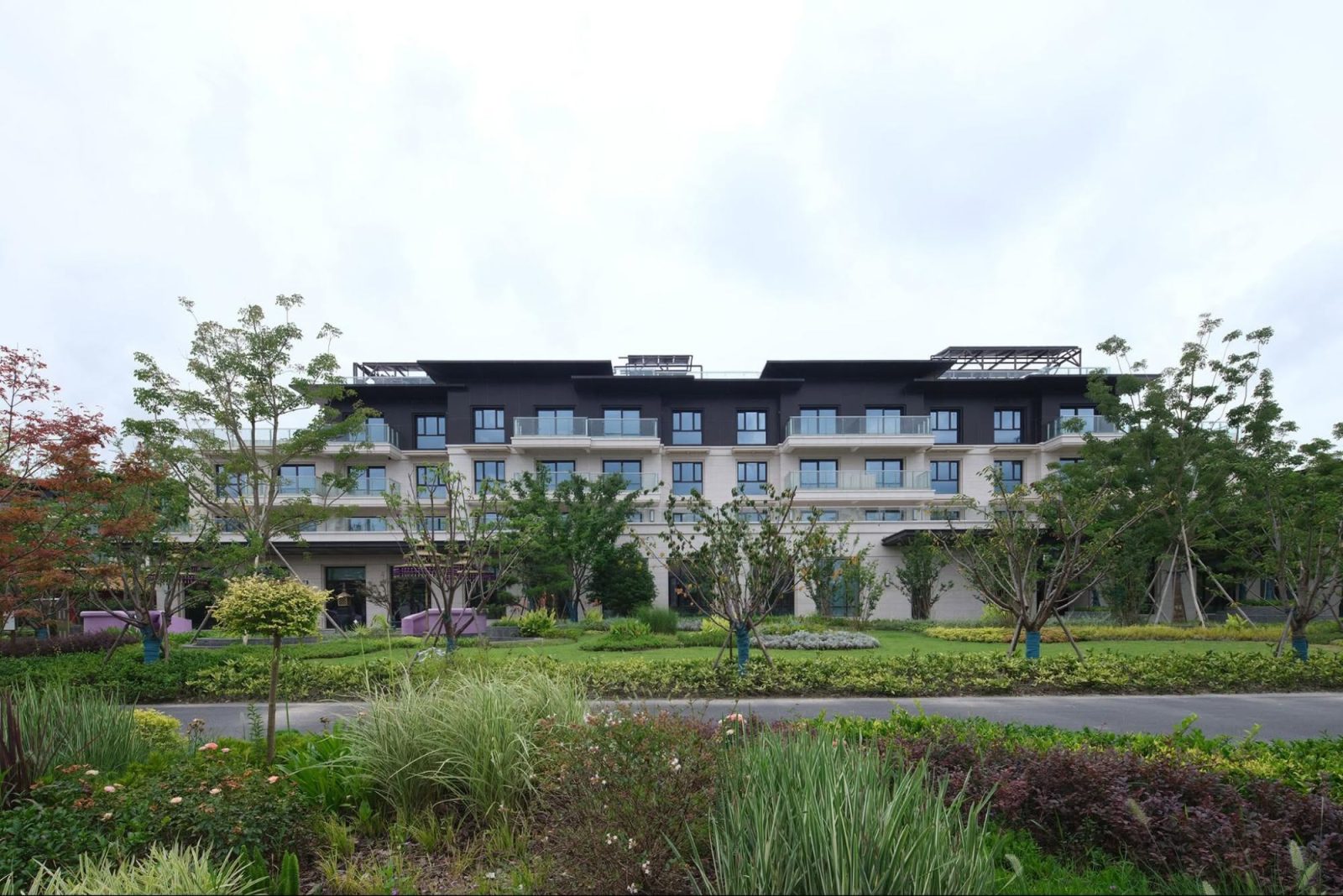
The community features shared spaces: gardens, libraries, and walking trails, to encourage social interaction and activity among residents
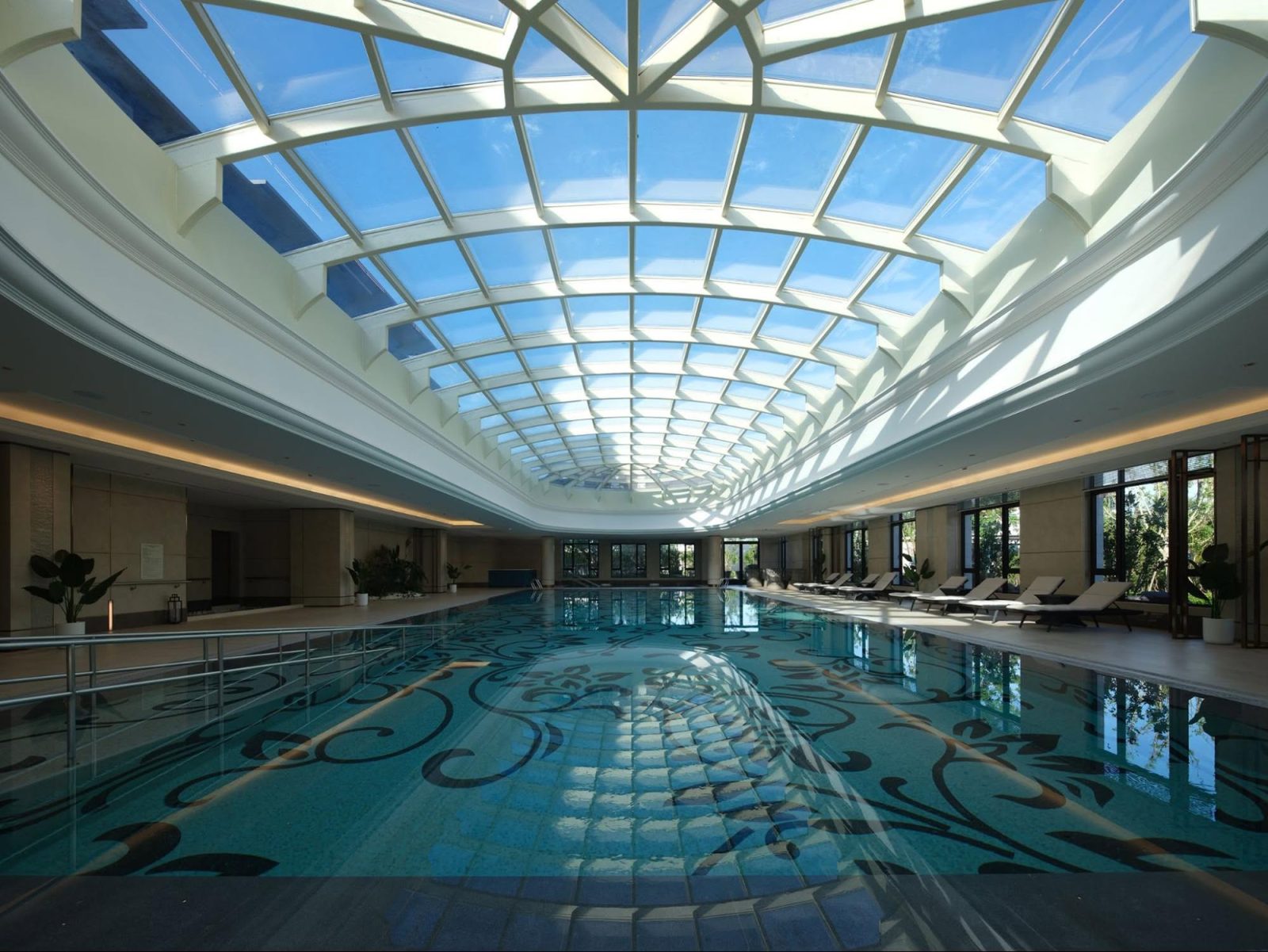
Fitness amenities, gyms, and recreational facilities encourage active living. Cultural workshops and events are also part of daily life, providing opportunities for residents to stay engaged with their interests and the wider community.

But it’s not just the community spaces that impress, the living spaces are equally intentional. Kitchens and bathrooms are ADA-compliant, with health monitoring systems integrated into the design. These features ensure residents can maintain autonomy and dignity as their needs evolve.
Let’s Not Overlook Key Differences Between Singapore and China
Before applying these lessons, we need to acknowledge some key differences:
Both countries share high homeownership rates, but China has the luxury of vast land, allowing for creative experiments and larger-scale developments. Singapore’s space constraints demand a more intentional approach.
Most Singaporeans live in public housing (HDBs), giving us the advantage of having a central body that can push for systematic change. This holds unique potential for innovations in senior living.
Culturally, the contrast is striking. While China’s population is largely homogeneous, Singapore’s diversity adds both complexity and opportunity.
But both nations face similar challenges: affordability and supply remain pressing issues. Quality senior housing often feels like a luxury reserved for the affluent.
What Singapore Can Learn From These Projects
CITIC Chongming Island addresses the diverse needs of seniors at different stages of ageing, offering a wide range of options to suit various lifestyles. It’s nice that the approach isn’t a one-size-fits-all project, as everyone experiences ageing differently. The design also prioritises community over isolation, which is a major challenge of advanced ageing.
There are elements here that offer a valuable lesson in catering to a broad spectrum of needs, which might inform our future projects.
That said, Singapore isn’t entirely unfamiliar with the concept.
The Hillford was probably our closest attempt so far; but it’s tough to use that as a model, when it was bought for reasons other than elder care (e.g., younger buyers also purchased units, simply on the basis of quantum and location.)
As Singapore celebrates its 60th birthday this year,it’s fitting that we face questions about how we accommodate our seniors. The nation itself is entering its senior years, and the priorities of 1965 aren’t the priorities of 2025.
While we don’t have all the answers yet, it’s important to start the conversation and consider potential solutions – whether through feedback sessions, new condo launches, existing HDB towns, or even large-scale pilot projects. High-quality senior living shouldn’t be a luxury for the few, it should be the standard for everyone. And if there’s any place that can make that happen, I believe that it could be Singapore.
If you’d like to get in touch for a more in-depth consultation, you can do so here.
Cheryl Teo
Cheryl has been writing about international property investments for the past two years since she has graduated from NUS with a bachelors in Real Estate. As an avid investor herself, she mainly invests in cryptocurrency and stocks, with goals to include real estate, virtual and physical, into her portfolio in the future. Her aim as a writer at Stacked is to guide readers when it comes to real estate investments through her insights.Read next from Property Market Commentary
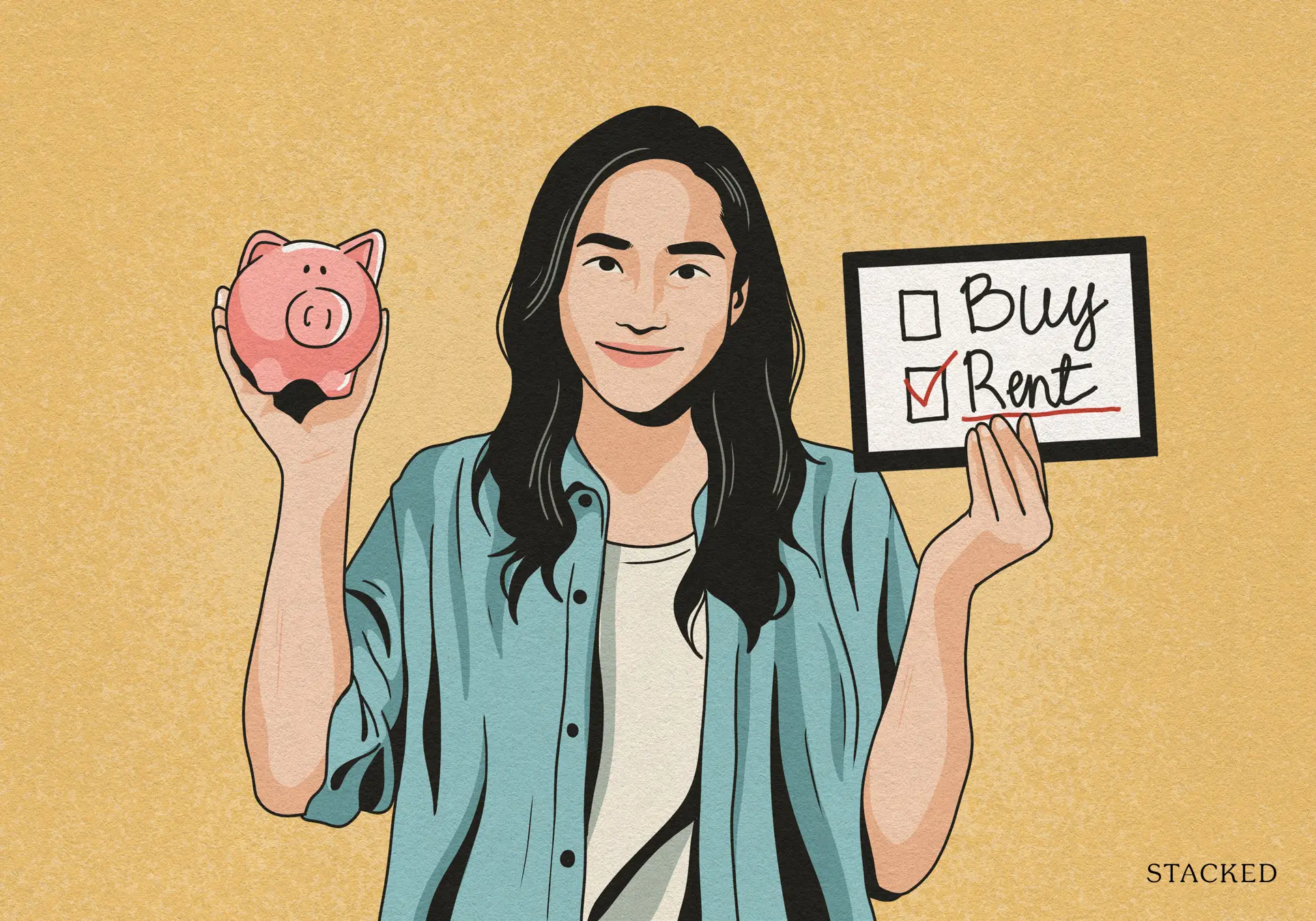
Property Market Commentary When Renting In Singapore Is The Smarter Move — And Buying Can Wait
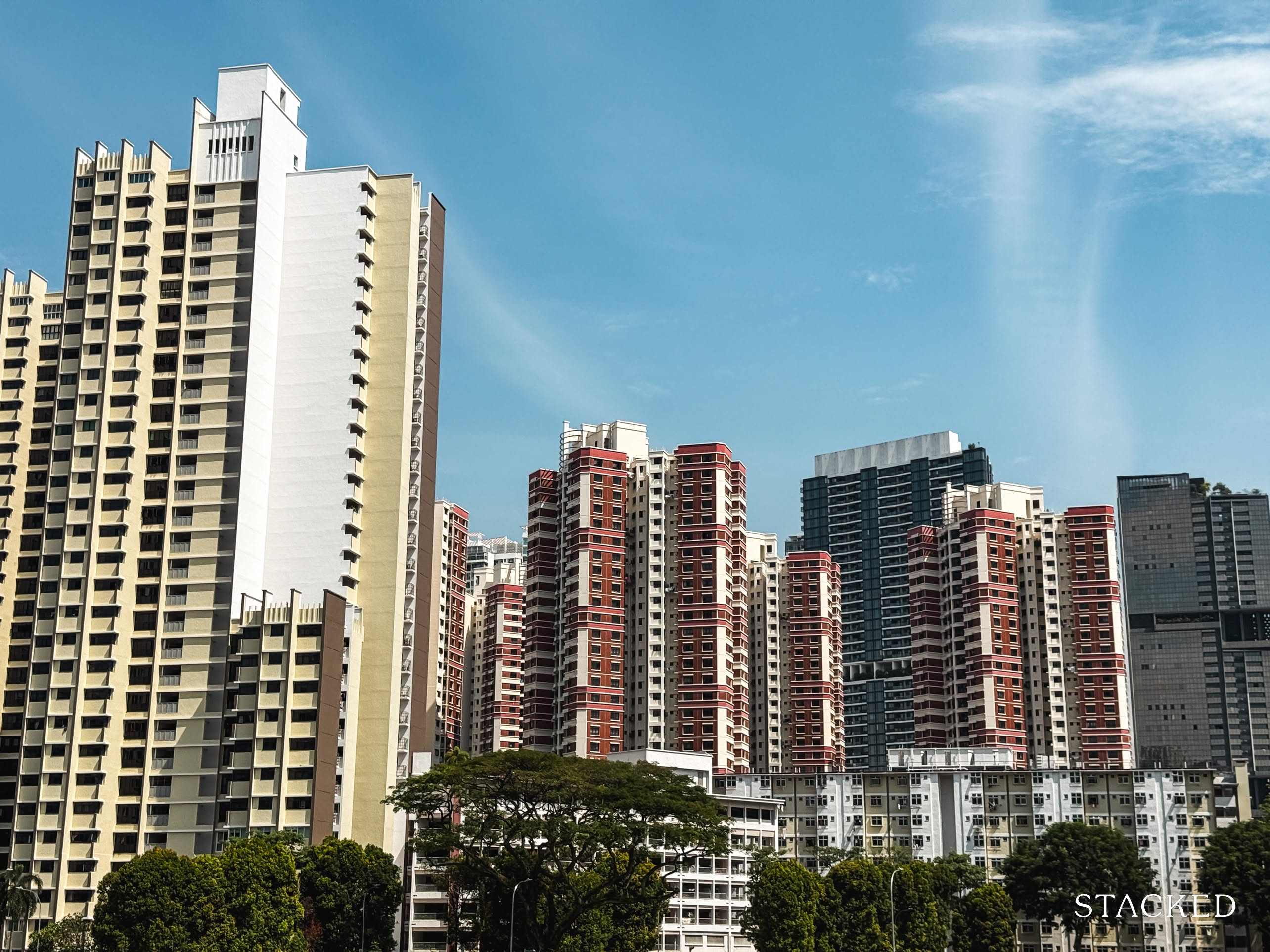
Property Market Commentary A Wave Of New HDB Resale Supply Is Coming In 2026: Here’s Where To Find Them
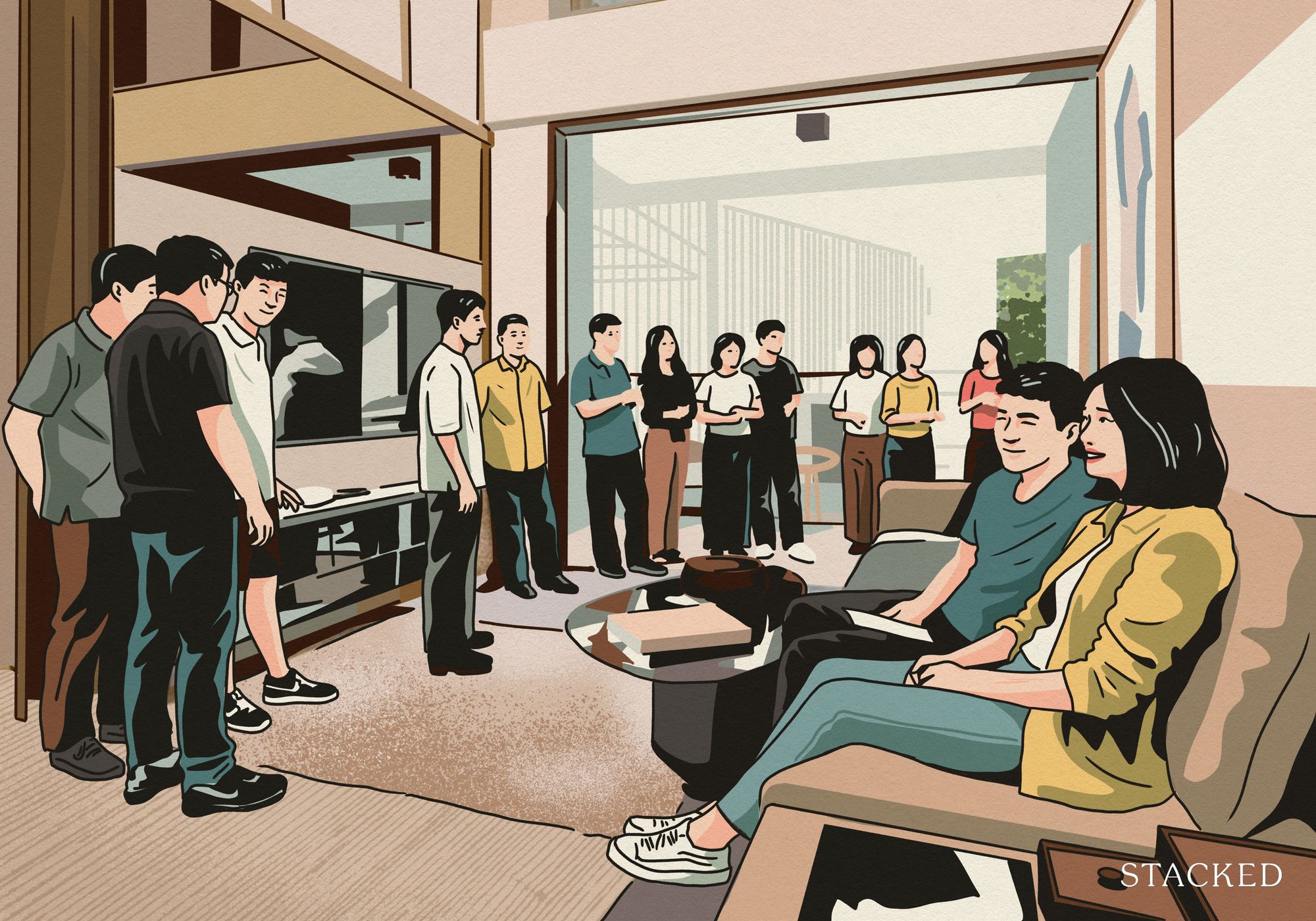
Property Market Commentary 5 Key Features Buyers Should Expect in 2026 New Launch Condos
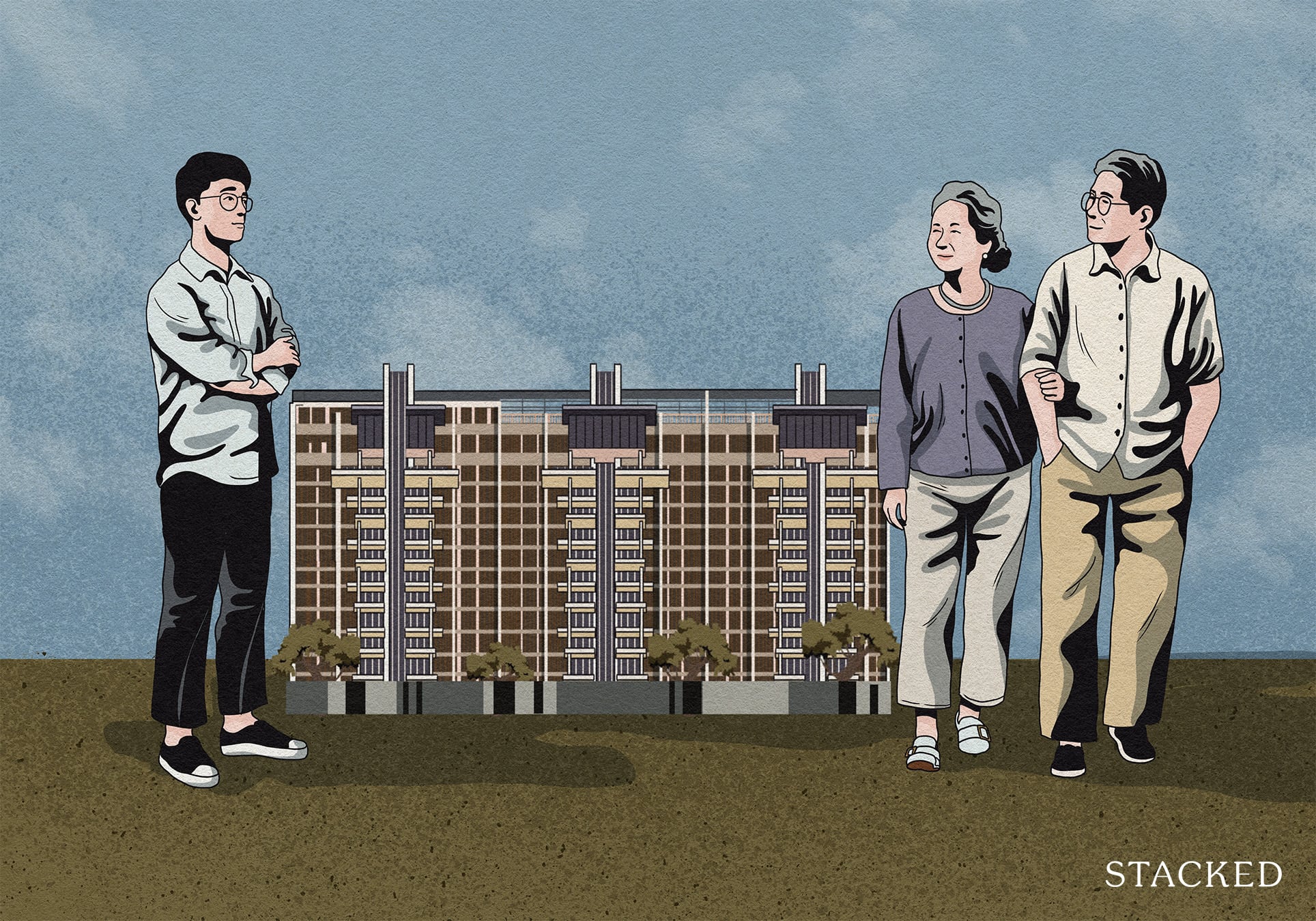
Property Market Commentary What “Lucky” Singaporean Homebuyers Used To Get Away With — That You Can’t Today
Latest Posts

Landed Home Tours Why Singaporean Families Are Looking At This Landed Enclave From Around $4M
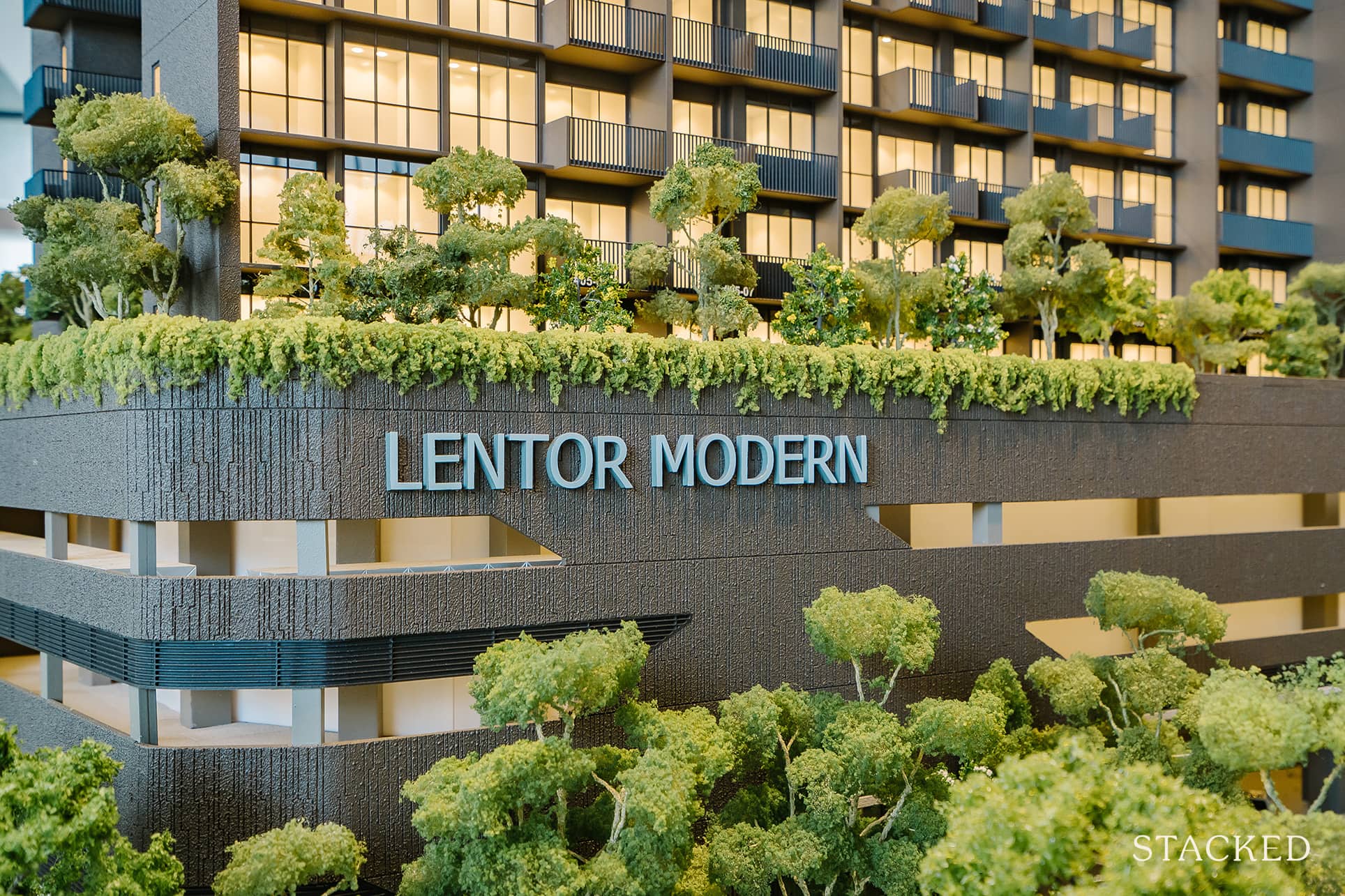
Singapore Property News Lentor’s First Condo Is Complete — The Early Profits May Surprise You
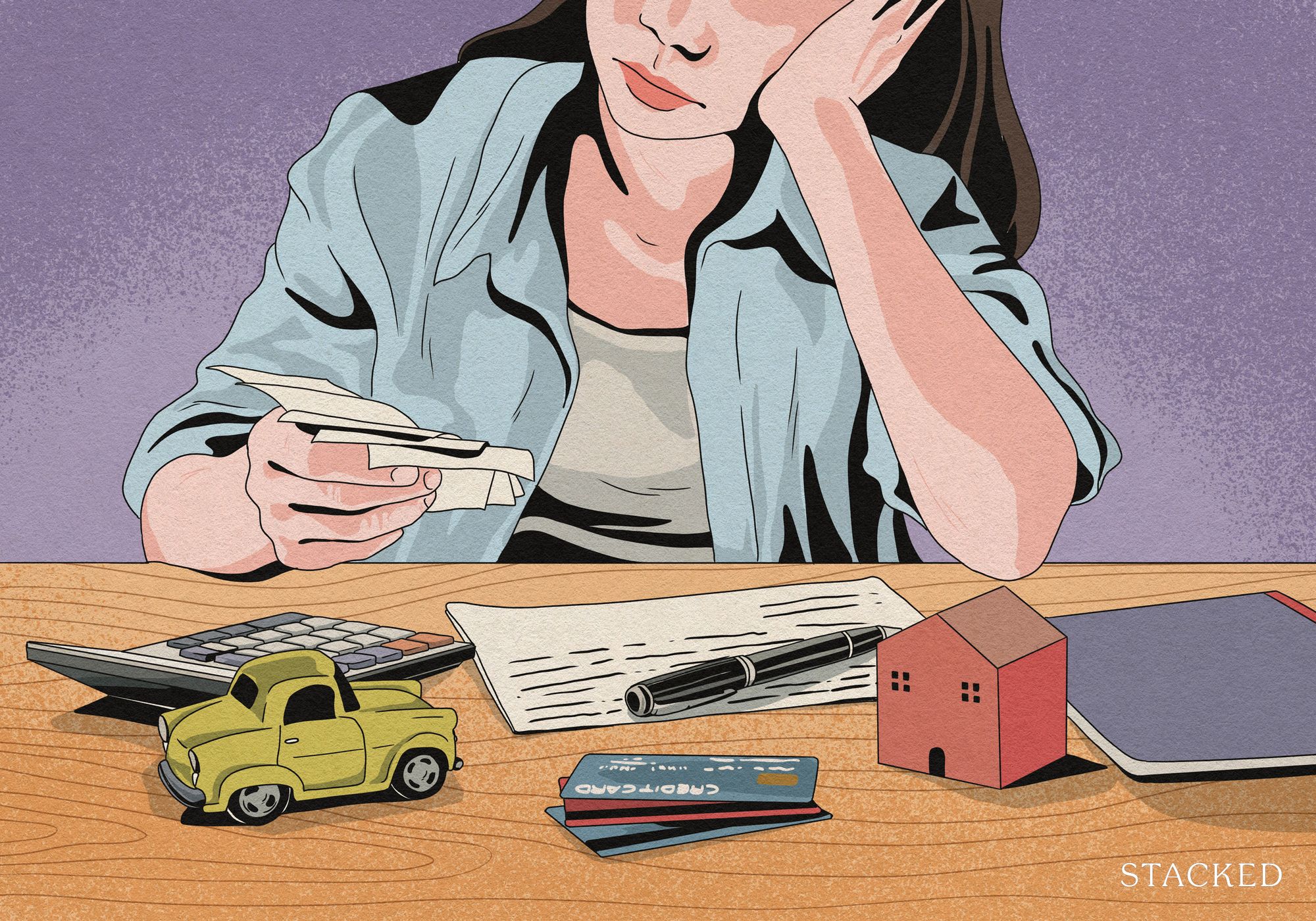
Property Advice We Own A $800K 1-Bedder And A $1.1M 3-Bedder: Is It Possible To Upgrade To A 4-Bedder Condo?
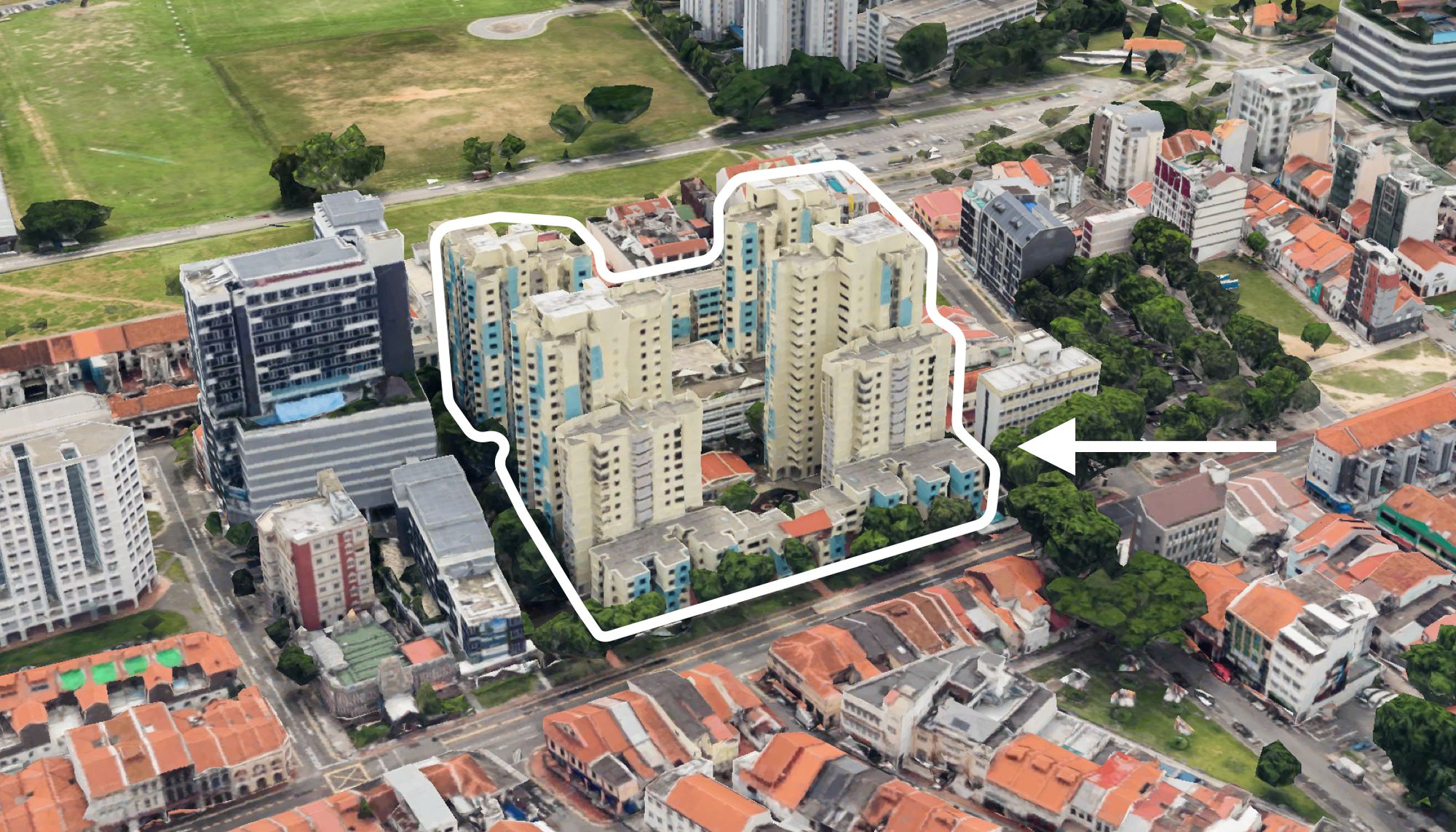
On The Market These Are Some Of The Cheapest 5-Room HDB Flats Left In Central Singapore
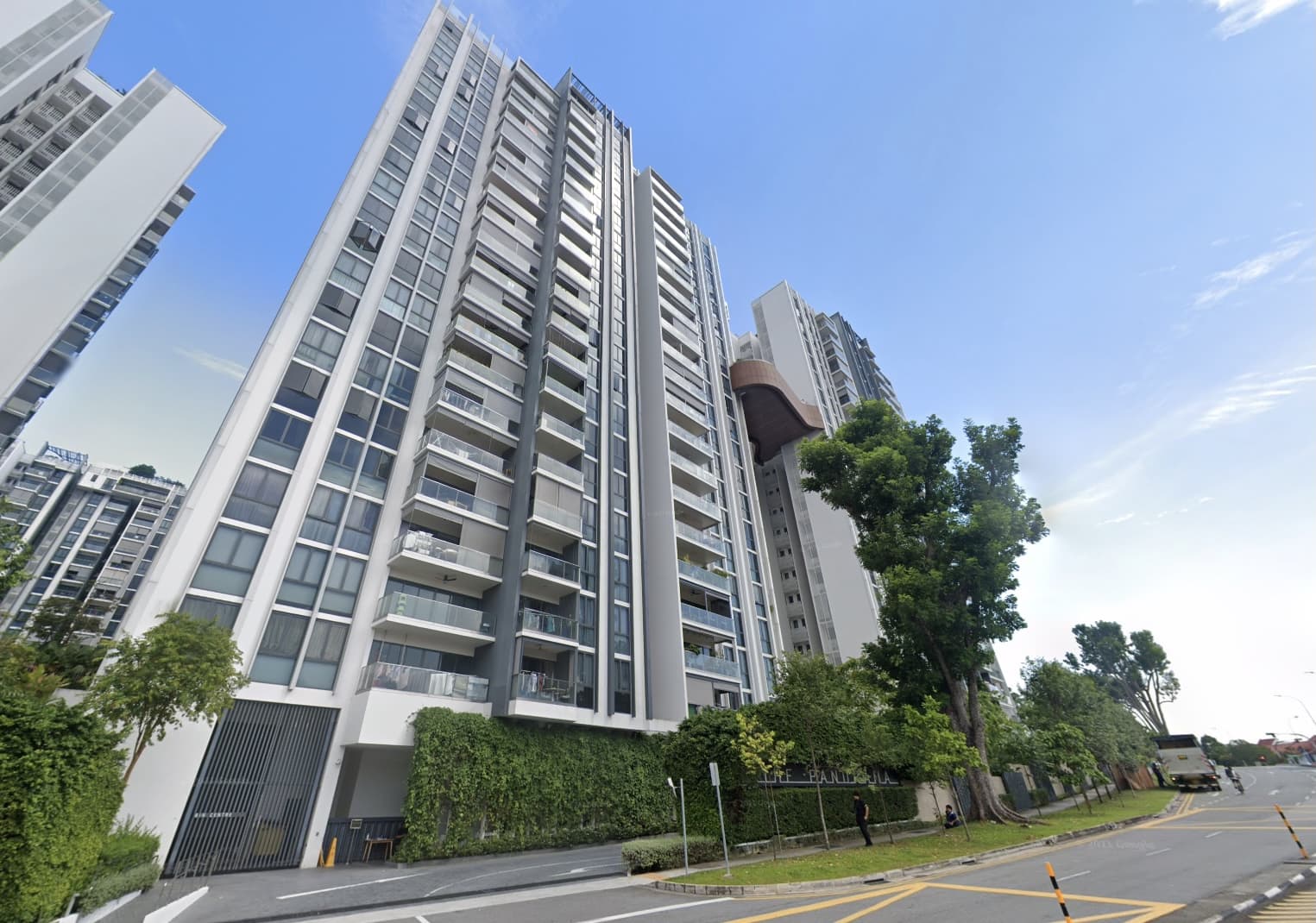
Pro This 698-Unit Ang Mo Kio Condo Launched At The Wrong Time — And Still Outperformed Peers
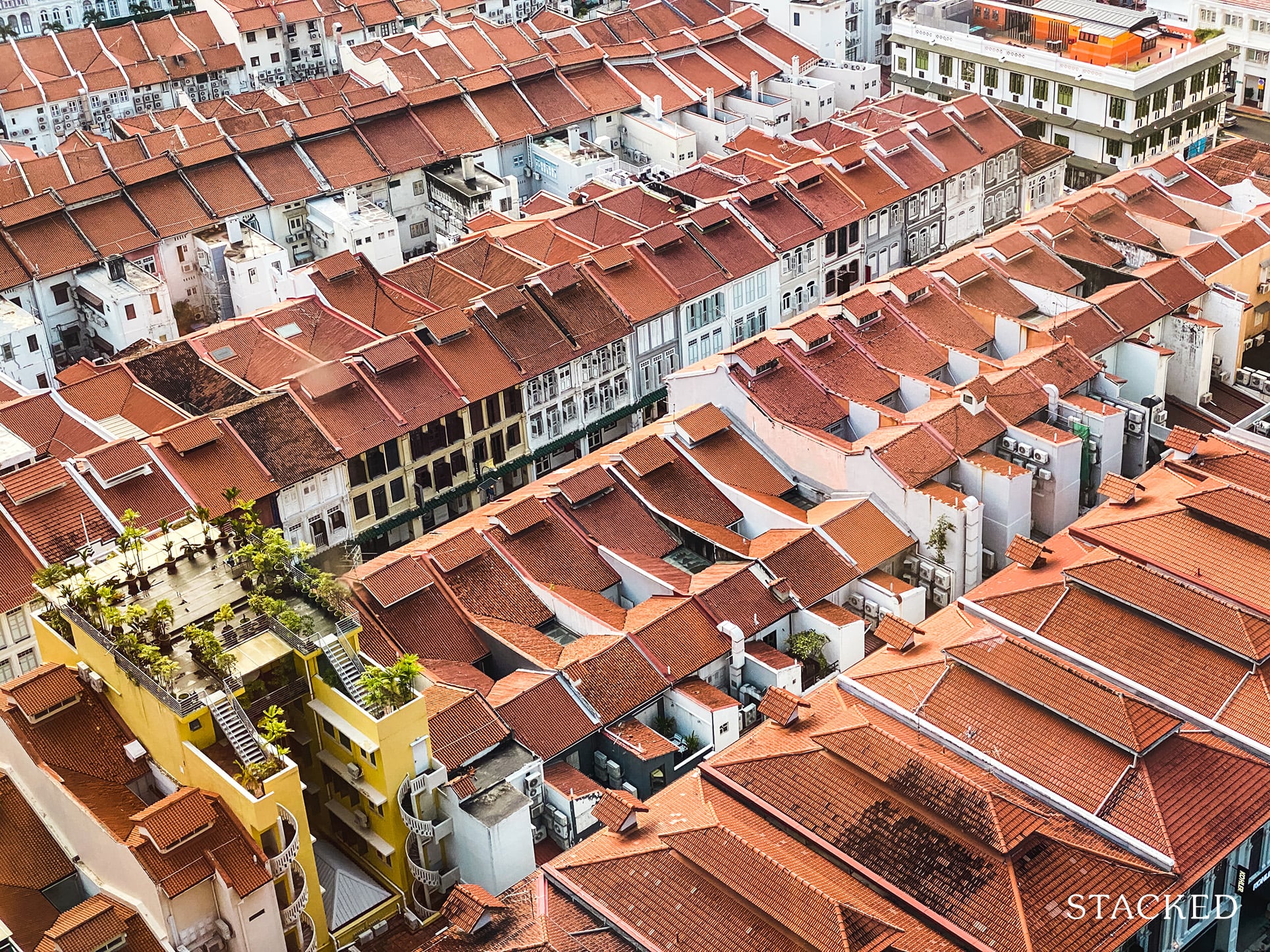
Singapore Property News $281.2M in Singapore Shophouse Deals in 2H2025 — But That Number Doesn’t Tell the Full Story
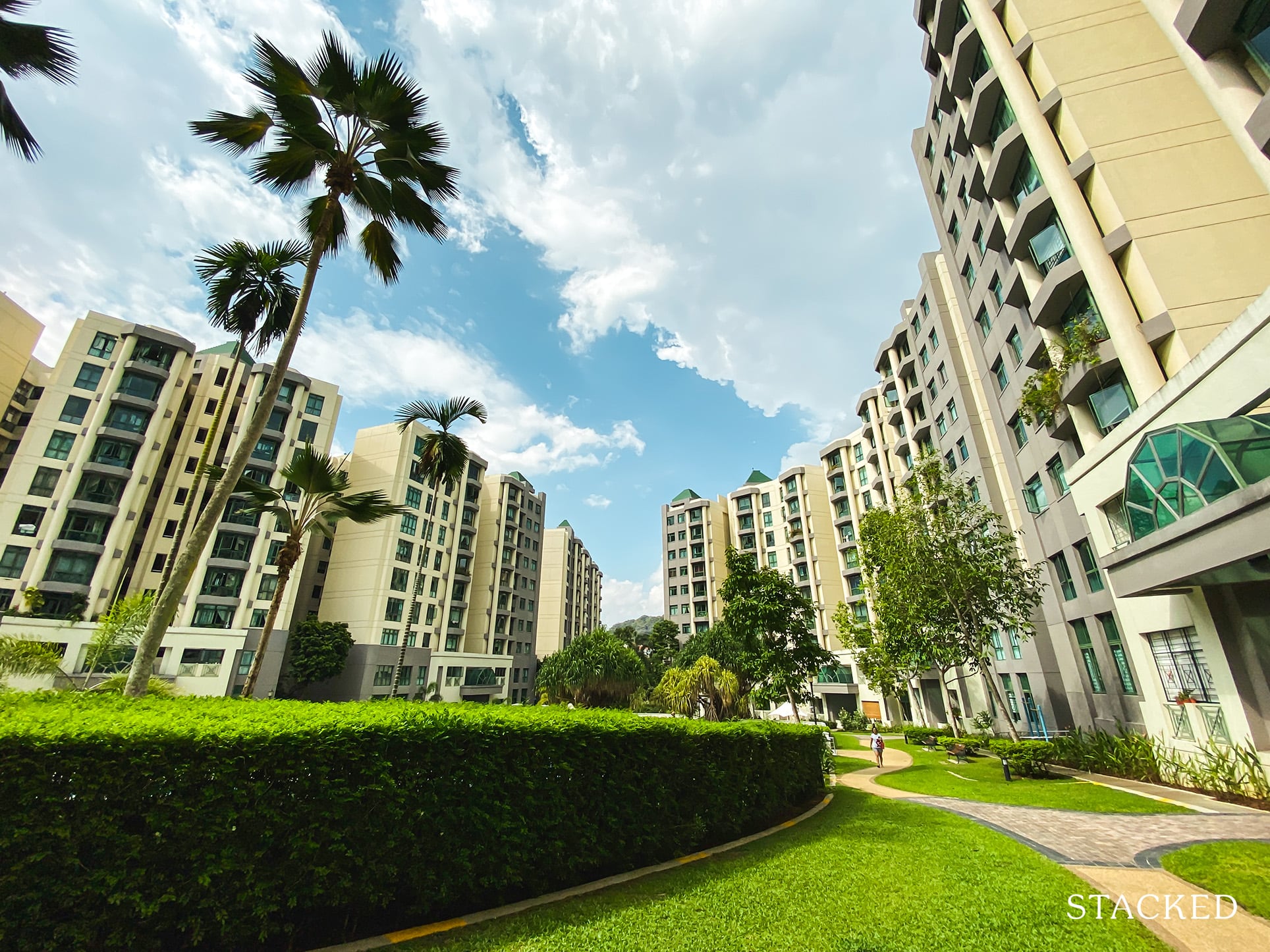
Property Investment Insights These Resale Condos In Singapore Were The Top Performers In 2025 — And Not All Were Obvious Winners

Singapore Property News CapitaLand–UOL’s $1.5 Billion Hougang Central Bid May Put Future Prices Above $2,500 PSF
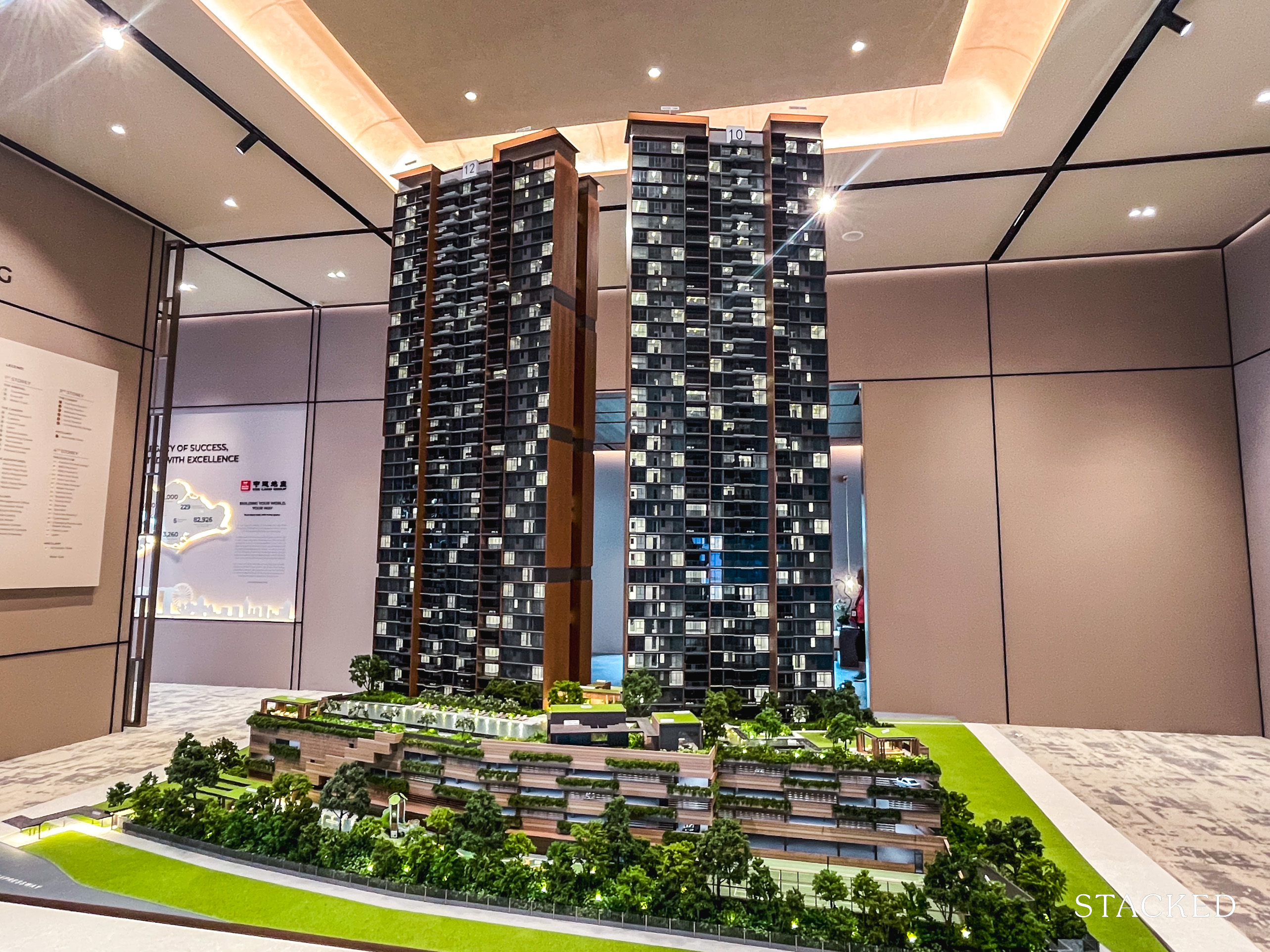
Singapore Property News Why New Condo Sales Fell 87% In November (And Why It’s Not a Red Flag)

Pro How A 944-Unit Mega-Condo In Pasir Ris Ended Up Beating The Market
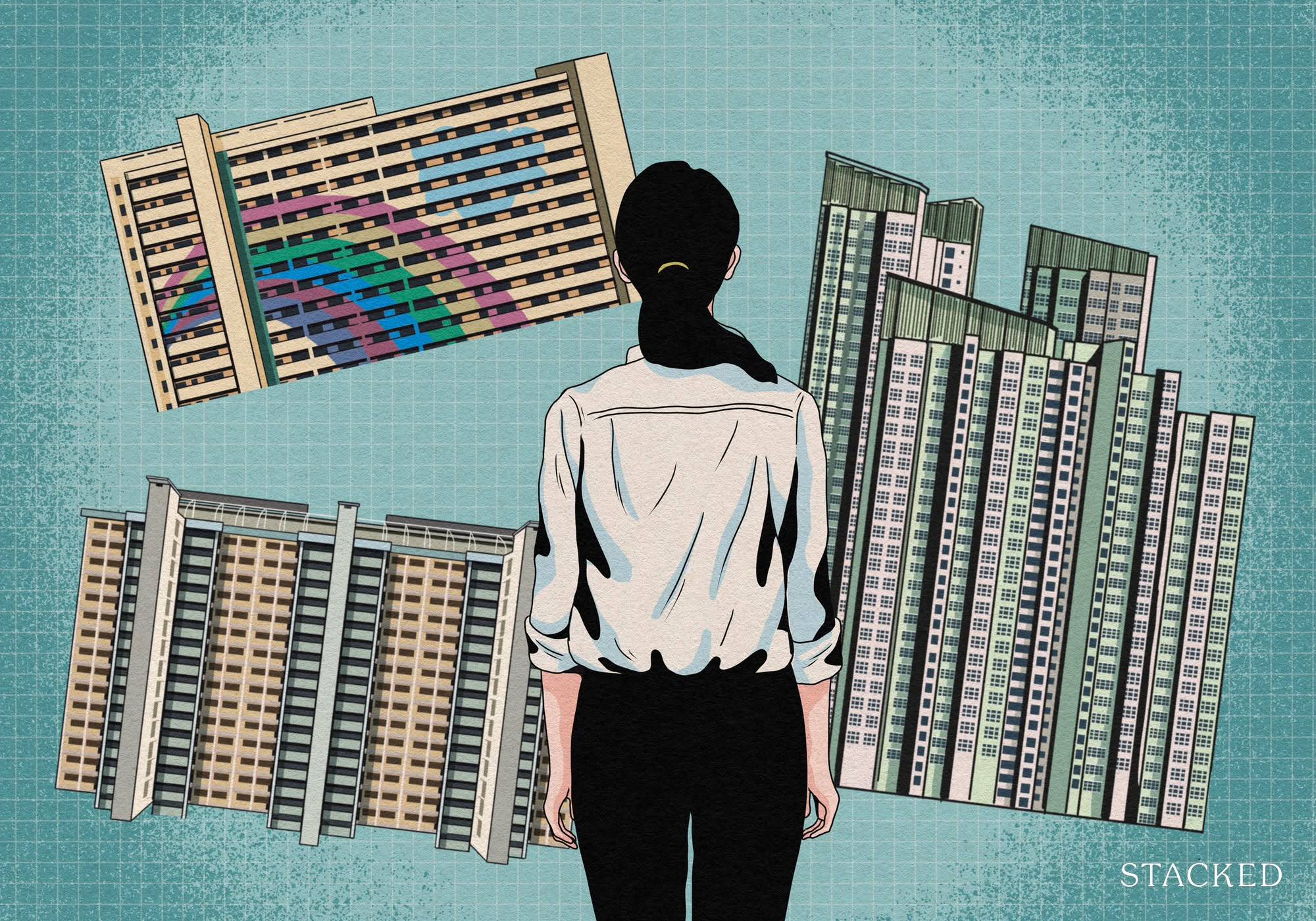
Property Investment Insights What Changed In Singapore’s Property Market In 2025 — And Why It Matters

Editor's Pick We Toured A Quiet Freehold Landed Area Near Reputable Schools — Where Owners Rarely Sell

Singapore Property News How Much Smaller Can Singapore Homes Get?
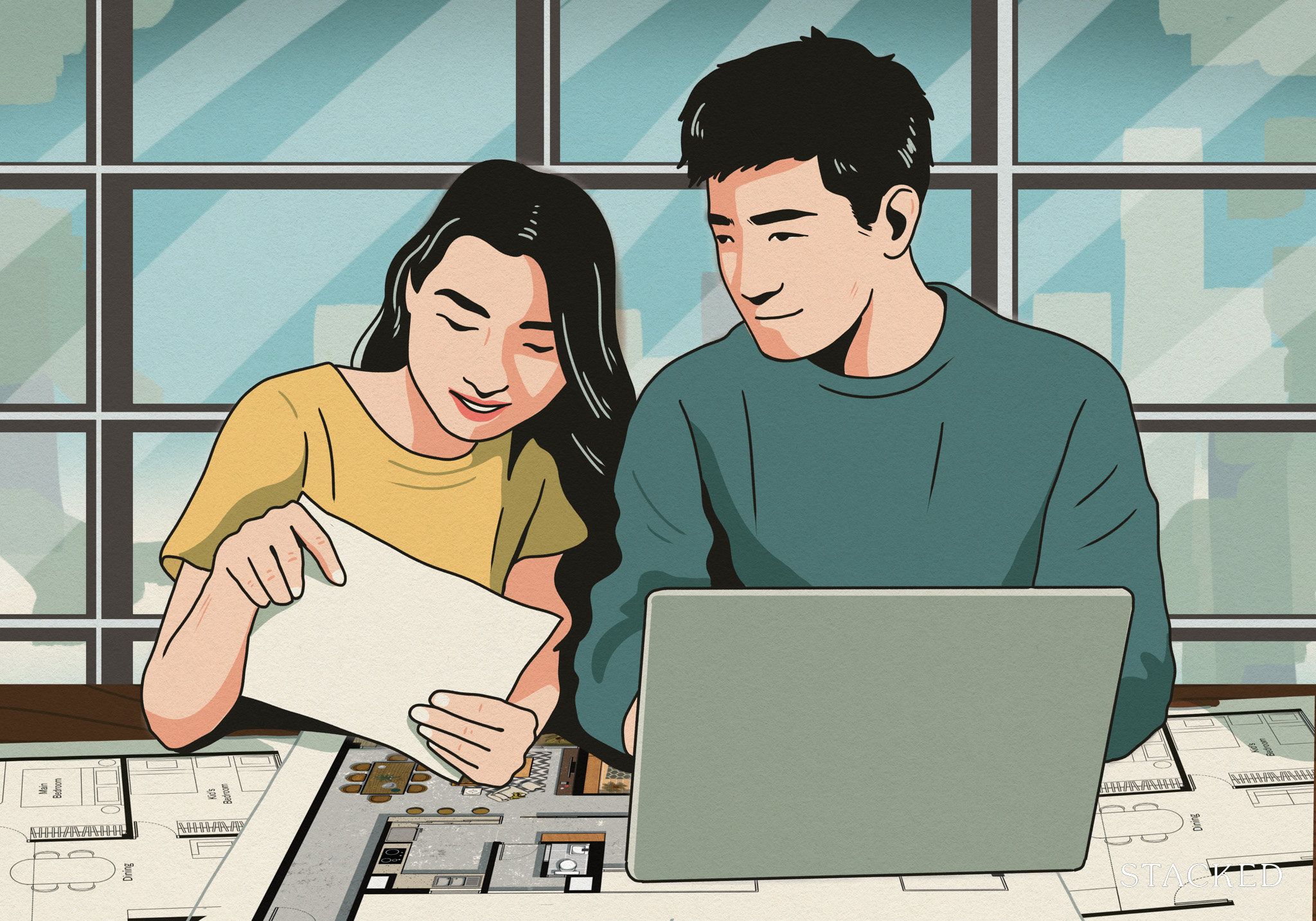
Editor's Pick The Biggest Mistake Singaporeans Make When Analysing Overseas Property

Pro How Much More Should You Really Pay for a Higher Floor or Sea View Condo?



Hi Ms Cheryl,
It may be possible to have a SG-MY collab on retirement villages in Johor Bahru. Medical services in JB are quite good and more affordable there. I am sure with the full retirement sum monthly disbursement amount, it can be done. For the more affluent, they can even build mini Florida like retirement centres there.
With RTS in operation in 2027 for ease of travel and the growth in Johor Bahru economy, plus the advantage of proximity, Johor Bahru might just be a good consideration,
From your avid reader (until Stacked decides to charge)
Charlie Ho